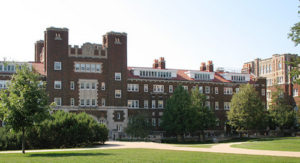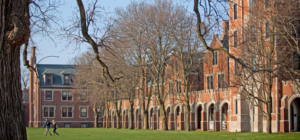Everyone involved in the realm of higher education today knows that sticker prices of colleges and universities can be daunting for students and their families. With the highest of these prices coming in at over $60,000 for tuition, room, and board, the prospect of a post-high school education may seem slim for most students in the United States.

Photo: University of Minnesota
With federal, state, and private forms of financial aid, even the most expensive schools across the country are made affordable. However, a phenomenon called the “middle class squeeze” shows how families in this income category may actually find it harder – financially – to send their children to college. For families in the lowest income brackets, financial aid often allows students to attend even pricey institutions at a very reasonable cost.
But unfortunately for many middle class families, the reality of not receiving enough aid makes the process of finding and choosing an affordable college stressful, and sometimes even impossible. Since schools with relatively small endowments don’t have an abundance of money to offer, most of it tends to go to families in the lower income brackets, making college even less affordable to those in the middle class. This occurs at a large variety of schools across the country, from large state universities to small private colleges.

Photo: Carleton College
To clarify, what constitutes “middle class families” certainly varies by state, IPEDS classifies the middle class as those that make $48,000 – $110,000 per year. These families tend to get caught in this “squeeze,” not receiving enough financial aid to make college affordable for their children. Small, private liberal arts colleges like Carleton College in Minnesota are actively working to make these families’ situations easier to manage by paying close attention to them in the allocation of financial aid.
Let’s take a closer look at an example of how they’re doing this. Carleton’s sticker price for the 2014-15 school year was just over $62,000. The largest public university in the state, University of Minnesota, Twin Cities, has a sticker price of about $25,700. Here the vast difference in price is clear, but it’s important to do some research about what it would actually cost to attend these schools.
According to IPEDS data, middle class families with an annual income of $48,000-75,000 would pay about $16,000 per year at Carleton. At the U of M, this same family would pay about $14,700, only about $1,300 less. Considering the initial difference in sticker price between these two schools, the minimal discrepancy here is astounding, and astoundingly affordable!

Photo: Grinnell College
To give another example of the affordability of many small liberal arts colleges, we can turn to the state of Iowa. Grinnell College, with an enrollment less than 1,700 students, costs about $59,300 for tuition, room, and board. At the University of Iowa, the sticker price is just under $21,000, almost a third of Grinnell. However, when we look at what a middle class family would pay at Grinnell and the University of Iowa after factoring in financial aid, the numbers are about $15,300 and $14,700 respectively.
From these examples, it’s clear that an in-state public university is not necessarily radically more affordable than a private institution, although the initial sticker prices definitely suggest otherwise. This is certainly the most compelling reason to do your research before ruling out certain colleges and universities due to apparent unaffordability, especially for middle class families.

Photo: University of Iowa
So, although you may see headlines about incredibly high sticker prices, and though these are great for attracting attention, this price actually doesn’t matter for families expecting to receive any kind of financial aid from the government and/or the school.
